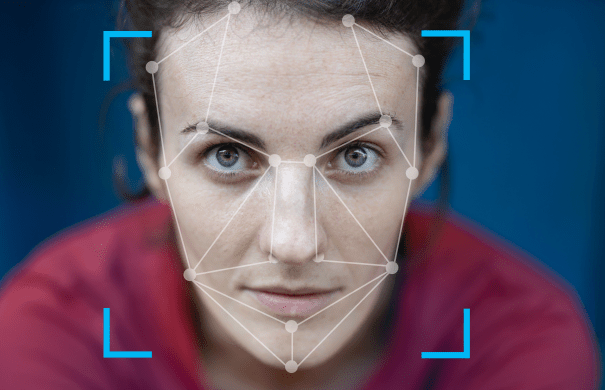It is startling how technology has altered our lives in recent years. We mostly don’t notice how much we rely on the use of artificial intelligence tools. Nevertheless, we rely on it in many spheres of our lives. Human existence is increasingly bound to technologies, that seem to be able to exercise judgments and operate independently.
The question of whether computers can actually think still remains open. In our article, we will study the theories of artificial intelligence, machine learning and deep learning and discover how they are related to one another and how they are able to carry out human-like activities.
What Is Artificial Intelligence (AI)?
Artificial intelligence is a technology used to develop software programs that can mimic the behavior of a human brain and carry out similar actions. Basically, AI can be studied like any other scientific field, like physics or math. The factors that help define a program as AI are rational human-like processes of making thoughtful decisions and carrying out actions. The subject matters of this discipline are smart programs and equipment that are able to resolve issues in an intellectual human-like manner. AI methods are utilized for the prediction, automatization and optimization of actions that were traditionally performed manually.
In IT since 1993, SaM Solutions offers professional custom software development services to clients across all industries.
The most common illustrations of AI are technologies such as speech recognizing systems, machine vision, translation of foreign languages, face and voice recognition, industrial manufacturing robots, driverless vehicles, chatbots and virtual agents. When you enjoy videos from YouTube recommendations, notice that these are suggested to you by AI based on your search preferences and tastes. Similarly, artificial intellect can filter your inbox regarding spam messages you have received. When your car navigation system advises you what road to take, this is the result of AI work as well.
Being a many-sided field of knowledge, AI has a huge impact on many spheres of life, ranging from various industries and business domains to the private life of people in the contemporary world. Electronic gadgets keep the information they receive and rework it algorithmically. As a result, they are able of making correct choices grounded on the information they have according to the pre-set operability.

What Is Machine Learning?
Machine learning is a form of artificial intelligence focused on automatic learning and system self-improvement based on prior events in a human-like manner. It is important to bear in mind that AI is an umbrella term that covers all the techniques of imitating the human brain, ML is primarily focused on training the systems on how they can grasp unfamiliar concepts and functions.
The three instruments of ML are:
- Supervised learning. Machines learn this way: they are trained on labeled data. Oftentimes, this method is implemented by engineers to forecast potential outcomes.
- Unsupervised learning. Unlike the first instrument, this one requires no labeled data. Alternatively, it focuses on finding, if there is a concealed relation or pattern in it. It is typically used when scientists are not aware of specific objects of a query.
- Reinforcement learning. Researchers resort to this instrument when algorithms are aimed to decide autonomously which action to prefer. The process is reiterated many times, which helps models learn the most effective ways to react. This method can be viewed as the trial-and-error approach.
A typical ML system is based on preliminary data processing, algorithmic models, automatic approach, several iterations, using multiple diverse models, as well as opportunities to scale the system to a larger size. It is able to learn the given information, determine a pattern or similarity in the provided samples, and subsequently make a decision free from human interference. These programs are able to study new things, just as people can, and resolve issues with the help of an algorithmic approach such as neural networking.
The following are the most widespread methods used in ML:
- Regression — predicting of continuous values. For example, with this technique, it is possible to predict housing prices based on property sizes and location.
- Classification — identifying objects as belonging to a specific class. This technique is used to filter spam from your incoming messages.
- Clustering — discovering groups in provided datasets. This is widely used in segmenting the audience in the marketing domain, as well as when users need to classify their Internet traffic.
- Anomaly detection — detecting the deviation from the norm. This can help identify fraudulent transactions that don’t comply with the established rules, laws and instructions.
A machine carries out a comprehensive analysis of datasets, and software engineers exercise it with specific learning algorithms. This technology made it possible to implement ML in various spheres of human activity such as searching for IT security breaches, making weather forecasts, and enhancing the work of social media and financial organizations.
With ML, engineers can create models that analyze unstructured data and are able to deliver a precise result rapidly. Based on this result, a company can identify better business opportunities and avoid taking any precarious and risky endeavors.
Achieve digital transformation with custom software delivered by SaM Solutions’ seasoned engineers.
What Is Deep Learning?
As a subtype of machine learning, it is primarily focused on the implementation of neural networks. They resemble the work of human brains and can study the information that is provided. A neural network may consist of one layer, making forecasts with the help of it, but several extra layers will enhance accuracy and refine the overall functioning of the system.
Deep learning techniques enrich lots of applications, improving the performance of the system and enhancing its ability to calculate analytics and perform physical activities on its own.
According to this technique, computers learn from examples, in much the same way that children learn to repeat the words and movements of adults. When a driverless car stops in front of a definite road sign, it is the deep learning technique that made it do so. Our smartphones, gadgets and IoT smart home equipment are all supplied with the devices of such nature.
The deep learning models are able to learn how to classify objects based on imagery, texts or sounds they receive. Such programs can acquire outstanding accurate results in their ability to recognize significant factors and make decisions based on them. Not rarely do their capabilities assist in outperforming humans with regard to accuracy and speed.
How Do Artificial Intelligence, Machine Learning and Deep Learning Relate?
It’s an imitation of human intellectual abilities, or synthetical human-like shrewdness, that we talk about when it comes to artificial intelligence. AI includes a number of methods and approaches. For instance, one can name cybernetics and robotization, sighting and viewing, NLP, etc.
Machine learning is the most well-known and largest part of AI, and uses instruments to facilitate computer systems in learning how to work independently of developers’ intervention. It is focused on dealing with algorithms that learn from received data. It is possible to carry out ML methods based on how humans learn which includes not just simply repeating the same actions as one’s teacher, but also implies avid reading and remembering every rule and exception to this rule in order to make correct choices in the future.
In the case of computers, it means feeding specific algorithms, like human mind, with the abundance of extra details. The programs process them and afterward they “know” how to react to a particular situation. When the algorithms are ready, they are able to perform human-like actions and make thoughtful decisions.
Deep learning, correspondingly, is viewed as a part of ML, and denotes the way computer systems study, repeat and imitate human-like behavior. Thanks to the utilizing of many layers of neural systems, deep learning software can study and then address the most complex challenges.
Among other things, a deep learning program can recognize a specific animal based on the photos that you provide, by identifying the definite characteristics of this animal: the form of the paws, the color of the fur, the shape of the body, and the average size of this species. Similarly, robo-cars notice pedestrians, signs, and other cars on the road, even in poor visibility or weather. Typical ML methods are not capable of such actions.

How Is Deep Learning Different From Machine Learning?
To tell the difference between the two terms is to become aware that deep learning is a category of machine learning. In order to dive into more details, notice: in machine learning, programs have the power to think and act almost without humans, and deep learning techniques have a strong focus on teaching programs to think with the help of the structures that simulate a biological brain.
Deep learning utilizes computation with the help of a multilayer neural network. Moreover, it is more powerful and can perform analysis of imagery, video, and huge unstructured datasets, which is painful to machine learning. It is far more self-sustained and not so much human-dependent; contrarily, machine learning involves fewer assets.
Is Deep Learning Better Than Machine Learning?
It depends on your goals and project desires. ML is quicker to train, it requires less data. Deep learning, quite the opposite, is chronophageous and will require lots of data. The results of the ML technique are represented in numbers for apps that can classify and score them. And in deep learning, the results may be represented in various forms such as words and music.
Software developers tune deep learning programs in various ways; and in ML the capabilities to configure hyper-parameters have definite restrictions. Moreover, deep learning doesn’t require the extraction step, which is necessary in ML. It implies that deep learning methods need little or no human intervention at all.
What’s Next for AI?
It’s been forecast that in the upcoming decades AI programs will eclipse humans at every job that can be automated. Today it is actively incorporated in such areas as industry, manufacturing, surgery, math, law, retail, sales and even such creative tasks as making design and music.
Researchers suggest several possibilities for how AI can affect humankind in the long run. AI-powered boosted economics will lead to increased productivity in the industrial domain. This will grant a new outlook to the job market, as more and more jobs will be transformed into automated ones. People will work mostly in the humanitarian and interpersonal domain. Robo-cars will need no manual control, and the transport on the roads will be safer thanks to predictions and machine vision techniques.
Nevertheless, some tasks can still be performed only by humans, such as continuous learning, inventing new things from the scratch, seeing the cause and effect of the event, predicting the future of our universe, exercising free will, improvisation in music, performing art and creative activities. The number of neurons in any neural network of a program is below those that a human brain possesses, so the actions AI can perform are unfortunately limited, as they can not deal with unpredictability and spontaneity.
We mustn’t overlook the possible dangers new technologies may bring. Scientists warn us about the possible negative outcomes, such as that excessive use of AI in all spheres of life undermines confidentiality and violates human freedoms. Some futurologists even predict AI can possibly dominate the intelligence on our planet and subjugate Homo sapiens ultimately.
Conclusions
Humanity benefits from artificial intelligence, as many sides of life can be improved with AI automation: manufacturing, healthcare, routine and risky jobs. Artificial intellect is free from human errors, and can not be tired or overwhelmed with emotions.
However, scientists often discuss possible dangers of incorporating AI in every sphere of everyday life, such as data security issues, huge reliance on technology and loss of independency, as well as the danger of existential risks for human beings. These are the possible predictions, and we are yet to find out what the future has in store for us.



















 The Latest 15 Information Technology Trends in 2024
The Latest 15 Information Technology Trends in 2024 Top 10 Embedded Software Development Tools
Top 10 Embedded Software Development Tools IaaS vs. PaaS vs. SaaS: What’s the Difference?
IaaS vs. PaaS vs. SaaS: What’s the Difference? 10 Examples of Predictive Analytics
10 Examples of Predictive Analytics











